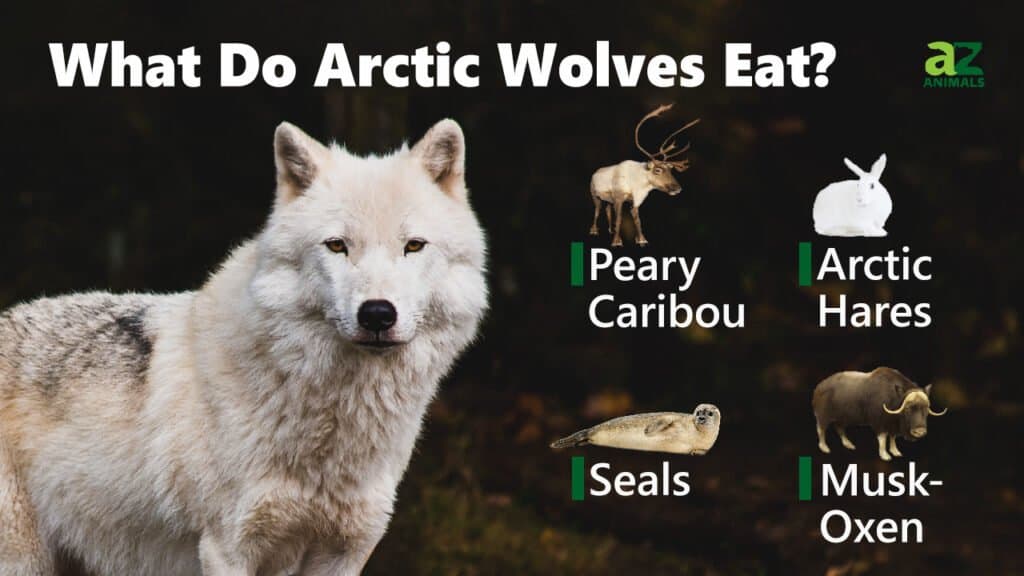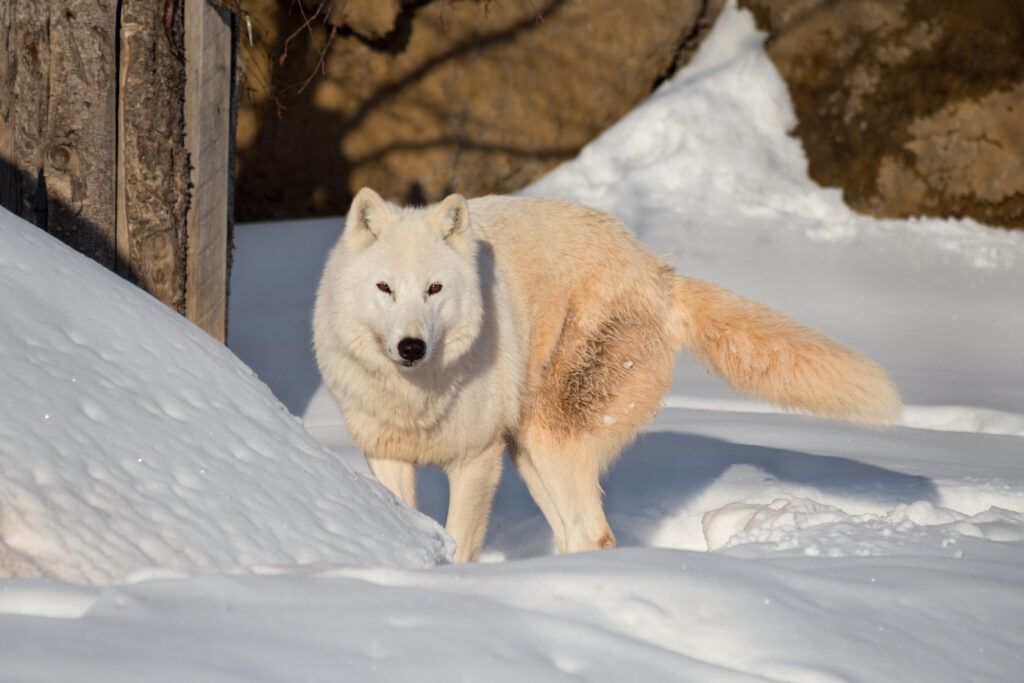Arctic wolves are stunning, majestic animals that are not common in too many parts of the world. Wolves in general are a popular animal, always being represented in books, movies, and cartoons. That’s because the idea of wild dogs is so appealing to humans, especially with their hierarchy.
Wolves are more than wild dogs; they are pack animals who care for one another. A family of wolves tells a story, and it’s no wonder that humans have always been fascinated with that story.
Today, we will learn about Arctic wolves in particular, and what they eat to survive and keep their beautiful families thriving.
Where Do Arctic Wolves Live?

Arctic wolves live in Alaska, Canada, Greenland, and Iceland.
©Jim Cumming/Shutterstock.com
This may not come as a surprise to many, but arctic wolves live in the Arctic. More than that, they live in Alaska, Canada, Greenland, and Iceland.
The Arctic is isolated, with limited human populations. Since they have plenty of room to mark territory, they can live in areas up to 1,000 miles in size. Luckily there is no shortage of space when a habitat isn’t being encroached upon by civilization.
Arctic wolves don’t dig dens like average wolves because the ground is too hard and frozen in the Arctic. Instead, they tend to make their homes in caves or under rocky overhangs. This is both to provide them a warm place to make their lives and protect them from any wayward predators.
What Do Arctic Wolves Eat?

When it comes to the food for the arctic wolves, a study of their feces posted in the Journal of Mammalogy says that they primarily eat muskoxen and lemmings. After those animals, arctic hares, arctic foxes, and geese came up most often.
Diets may differ a bit between territories for the apparent reason that separate continents might have diverse animals. Overall though, they tended to eat small and medium mammals as prey. Seasonal differences also can change what they eat.
A list of possible animals arctic wolves could consume include:
- Arctic Hares
- Arctic Foxes
- Lemmings
- Caribou
- Geese
- Greenland Collard Lemmings
- Muskoxen
How Do Arctic Wolves Hunt?

Arctic wolves can catch a variety of different animals.
©Tikhomirov Sergey/Shutterstock.com
While you might picture Arctic wolves trailing groups of massive Arctic animals like caribou or moose, the truth is their diet is significantly more varied. Bigger prey would most likely be less often because conditions need to be correct. It would be a whole adventure for active pack members, around seven arctic wolves, to track and bring down a caribou!
Muskoxen are a primary prey for Arctic wolves. They have long shaggy fur and large horns that stick curved out from their head. Large and stocky, the muskoxen are named so because they look a little like classic oxen and have a strong musky odor.
These animals are a great source of meat for a pack of arctic wolves, and they are slow and lumbering, so much easier to take down. All the wolves have to do is isolate a single muskox from the pack.
Lemmings are a far smaller and quicker animal. They resemble overlarge hamsters and are even smaller than normal guinea pigs.
They are plump, aggressive, and seen as not very intelligent. This makes them easy prey for the Arctic wolf to flush out and catch. A lemming also has a really terrible and piercing scream.
What Do Arctic Wolves Look Like?

Arctic wolves can be white, black, and gray with yellow eyes.
©Gunnar Ries, CC BY-SA 2.5, via Wikimedia Commons – License
There is no debate that Arctic wolves look like mystical, powerful guardians of the arctic. With glistening snow-white fur and glowing golden eyes, it’s easy to see why they are so revered.
When arctic wolf puppies are born they have light blue eyes. As they grow from juveniles to adults, they turn gold. An arctic wolf can be black, grey, or white.
Arctic wolves are particularly special because they have two layers of fur.
The first layer of fur is against their skin, and it is the waterproof layer. This keeps Arctic wolves protected at their core from the damp or wet snow. The second layer is incredibly thick, especially in the heart of winter to keep them warm, and it sheds thinner in the summertime.
The photo featured at the top of this post is © Josef_Svoboda/Shutterstock.com
Thank you for reading! Have some feedback for us? Contact the AZ Animals editorial team.






